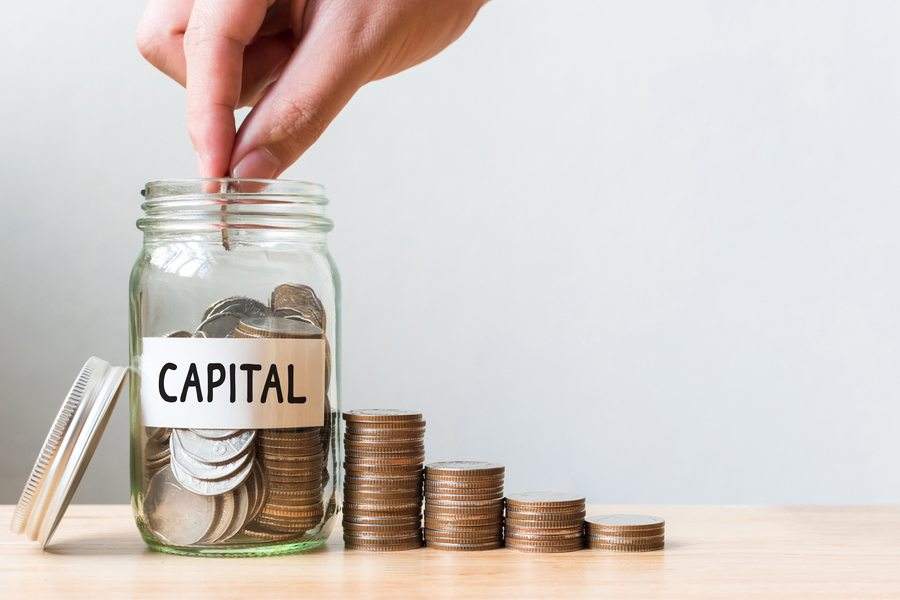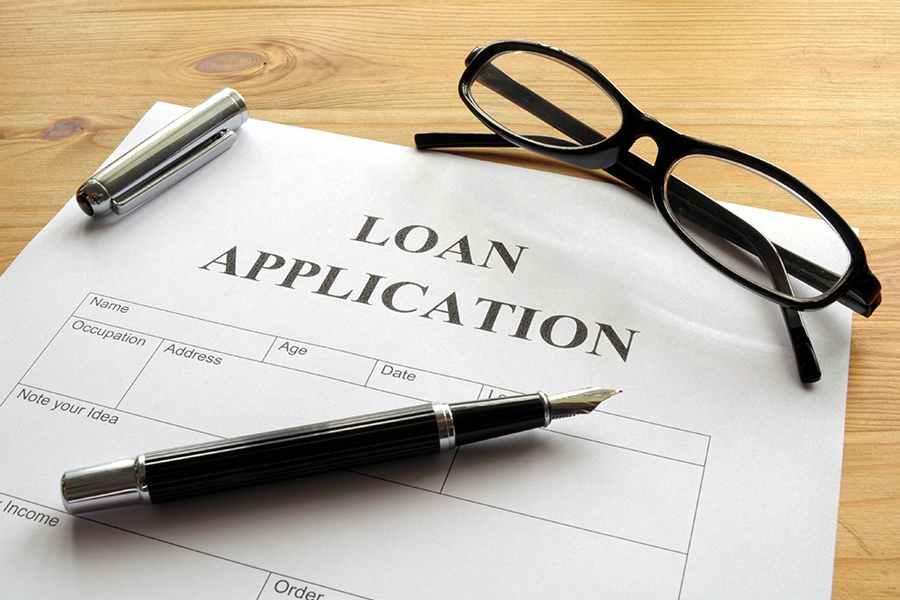Getting SBA startup business loans can be challenging as lenders know there’s a high failure rate for newer companies. However, it can be done, and we’ll walk you through how to get an SBA startup loan. You’ll need to have a business plan, know the details of how you’ll use the funds, understand the best SBA loan program for your needs, understand the eligibility criteria, and find a lender.
Getting an SBA loan as a startup company can be difficult, but you can improve your chances of getting the funding you need by supplementing it with a Rollover for Business Startups (ROBS). A ROBS gives you tax- and penalty-free access to your retirement accounts, allowing funds to be used for nearly any business-related purpose. Guidant Financial is a leading provider we recommend to walk you through completing a ROBS.
Step 1: Create a Business Plan
The first step in getting SBA startup business loans is to create a business plan. A business plan is a document outlining your company’s goals and how the company intends to achieve them. As a newer company without a long track record of success, this is a critical document that can impact whether investors or lenders decide to issue funding to you.
It should provide information about your company and the industry it operates in. This can include data on your company’s product, competitor analysis, marketing strategies, income and cost projections, and background on your company’s leadership team.
Business plans can come in many forms, and the specific content that’s included can vary depending on your industry. However, they commonly include the sections listed below.
- Executive summary
- Leadership team’s background and qualifications
- Overview of products or services
- Analysis of competitors
- Target audience for your company’s product/service
- Marketing analysis and strategy
- Financial analysis (including projections for income and expenses)
As a newer company, be sure to check out the following free resources on how to write a business plan and general advice on running a successful business:
- Our guide on writing an SBA business plan [+ free template]
- SBA’s tips on writing your business plan
- SCORE’s business planning courses
Step 2: Evaluate Your Funding Needs
Before borrowing money, you should have a clear picture of why you need to get funding. This includes how much of a loan you’ll need, your expected return on investment, and an analysis of the impact this will have on your business.
- Loan amount: To avoid only being able to partially fund your business goals, you’ll need to ensure you request a sufficient amount of funding. While you can request more than what you need, be aware that you’ll also be paying more interest charges.
- Expected return on investment (ROI): The funds you use should provide a net positive ROI, whether directly or indirectly.
- Impact on business finances: If you decide to take out a loan, consider the short- and long-term impact on your business finances. To do this, you can conduct a cash flow analysis forecasting revenue and expenses for the next 12 to 36 months.
Step 3: Choose the Right SBA Loan Program
The SBA has many loan programs depending on a company’s qualifications and intended use of the funds. For newer companies, the following programs may be a good fit. You can also consider the SBA’s other programs, which we cover in our guide on SBA loan types.
- SBA 7(a) loans: Best for unrestricted business use of funds
- SBA Microloans: Best for small funding needs
- SBA Community Advantage loans: Best for businesses in underserved areas
- SBA CDC/504 loans: Best for large assets that promote business and job growth
The SBA 7(a) loan program is the most common type of financing issued by the SBA. It offers up to $5 million in funding, and loan proceeds can be used for a wide range of business-related purposes. Some examples include furniture, fixtures, supplies, inventory, equipment, and working capital needs.
SBA Microloans can be a good option if your business does not need a large amount of funding. Microloans can provide up to $50,000 in proceeds, although the average amount is around $13,000, according to the SBA. Money obtained from an SBA Microloan can be used for nearly any business-related purpose, similar to the 7(a) loan program. Microloans cannot, however, be used to pay existing debts or acquire real estate.
The SBA Community Advantage loan program is designed to provide financing to those in underserved areas. Examples include businesses in low-income communities and rural areas, startups, and veteran-owned companies. Up to $350,000 in funding can be obtained. However, this is a temporary program currently scheduled to last through September 30, 2024.
Loans issued through the SBA CDC/504 loan program are designed to allow businesses to acquire assets that promote the creation of jobs or business growth. Up to $5 million in funding can be issued. Examples of assets that can be acquired with funding from this type of loan include land, buildings, equipment, and machinery. CDC/504 loans cannot be used for working capital or to pay business debt.
Step 4: Evaluate Your Loan Eligibility
To be eligible for an SBA startup loan, there are general requirements that must be met, regardless of the type of loan you need. Additional requirements can also apply depending on the specific type you are applying for and the lender you are using.
Step 5: Shop Lenders That Issue SBA Loans
SBA loans are offered through individual lenders such as banks, credit unions, online lenders, and business loan brokers. Shopping rates with multiple lenders is recommended to ensure you get the best available ones. Some lenders may also have more flexibility in their eligibility criteria, making it easier for you to qualify.
If you work with an SBA-preferred lender, you may be able to get funded and approved more quickly. This is because SBA-approved lenders have undergone a more thorough training and evaluation process, allowing them to make lending decisions without needing a second review from the SBA.
If you’re unsure where to start, check out our recommendations for the best SBA lenders. You can also use the resources below, depending on the type of loan you’re applying for.
- SBA Lender Match: SBA Lender Match is an online tool provided by the SBA. The questionnaire takes just five minutes to complete and is designed to connect you with a lender who can help you. To complete the questionnaire, you’ll need to provide some information about your company and the type of loan you’re looking for.
- SBA Microloans: If you are looking for an SBA Microloan, you can utilize the SBA’s list of providers to find a local lender. The lenders you find on the list may also offer additional products and services.
- CDC/504 Loans: 504 loans are only available through Certified Development Companies (CDCs). You can use the SBA’s find a local CDC page to connect you with a qualified lender.
- SBA Brokers: SBA brokers are experts in understanding which lenders are likely to approve your loan request with the terms you’re looking for. Many can also help you navigate some of the complex requirements and steps involved in getting an SBA loan, such as identifying paperwork requirements and tips for how to best present your business.
If you’d like to work with an SBA broker, we recommend Guidant Financial. You can get pre-qualified online in under two minutes and can work with a dedicated team member to find the best SBA loan for your business.
Lender Considerations
The lender you choose can have a big impact on your loan experience and your company’s finances. It can affect the rate you get, the fees you’ll pay, how quickly you can get funding, and how much paperwork you’ll be asked to provide.
To maximize your approval odds and the chance you’ll get a streamlined lending experience, consider the following items in selecting a lender:
- SBA-preferred status
- Qualification requirements
- Experience with your company’s industry
- Hours of operation
- Branch locations
- Typical approval and funding speeds
- Customer reviews and ratings
Step 6: Submit a Loan Application & Provide Required Documents
After you’ve found an SBA lender to work with, you’ll need to complete its loan application and provide the necessary documentation. The exact documents needed can vary depending on the type of SBA loan you’re applying for. Individual lenders may also have additional requirements.
Here is a list of the most common documents you should be expected to provide:
- Borrower information SBA form 1919: This provides the lender with basic information about your business and details on your loan request.
- Personal financial statement SBA form 413: Used by the SBA to determine your financial condition, creditworthiness, and ability to repay a loan.
- Loan application history: Since SBA loans are not intended to be a primary source of financing, you must demonstrate you have attempted to and been unable to obtain a loan from other lenders.
- Proof of business ownership: Copies of tax returns, articles of incorporation, or stock certificates are several examples of documents that may be accepted as proof of ownership.
- Business plan: A document that outlines your company’s goals and how it plans on achieving them. This should include information on your company’s leadership qualifications, industry analysis, and revenue projections. You may want to download the free template in our guide on how to write an SBA business plan.
- Business license and relevant industry certifications: If excluded from your business plan, you may be required to provide proof you can operate legally in the industry by providing copies of business licenses or industry certifications.
- Financial statements (if applicable): As a startup, you should provide as much information as you can such as tax returns, profit and loss statements, or balance sheets.
- Financial statement projections: If excluded from your business plan, you should provide more details on your expectations for revenue and expenses.
What Happens After Applying
It can take one to two months after you submit your application to receive proceeds from the loan. To give you an idea of where you are in the process, here is a timeline of events that will occur and how long it typically takes to reach these steps.
A letter of intent contains the terms and conditions a lender is willing to issue for your loan. Lenders will provide this document to you once they have completed a preliminary review of your full application and determined that it likely meets its qualification requirements. To move forward in the process, you will need to agree to the loan terms.
After you have accepted your letter of intent, your file will move forward to loan underwriting. This step can take 1 to 3 weeks. During this stage, your credit, income, and other aspects of your business will be reviewed in greater detail. It is common for the lender to have clarifying questions during this stage, so you should expect to provide explanations and documentation to clarify things like unusual deposits or fluctuations in income and expenses.
Once your loan has gone through underwriting and the lender issues an approval, you’ll receive a commitment letter that confirms the terms of your loan and any outstanding steps you must take.
After accepting and completing the remaining requirements in the commitment letter, you should expect to sign your final loan documents within several business days to 2 weeks. This is one of the last steps before your loan is funded.
Loan Approval Considerations
If you don’t get approved for the terms you’re looking for or want to ensure you’re getting the best rate available, ask the lender how it evaluated your file in the areas listed below. This can ensure that nothing was overlooked and that the lender has not made any mistakes in its review process:
- Income calculations and methodology
- Debt payments
- Ability to exclude certain short-term debt or debt paid by others
- Calculation of financial ratios (such as DTI and DSCR)
- Assets (such as checking, savings, investment, and retirement accounts)
- Value and condition of collateral pledged for the loan
Alternatives to SBA Startup Loans
If an SBA startup loan isn’t right for you, you can consider our list of the best startup loans to get funding for your business. Since getting funding as a newer company can be challenging, we also recommend heading over to our guide on how to get a small business loan, as it contains recommendations for how you can improve your chances of getting approved at the best possible interest rates.
Frequently Asked Questions (FAQs)
Yes. The SBA itself states on its website that newer businesses and even those with bad credit can qualify for startup funding. The SBA mentions that eligibility is largely based on how a company earns income, the character of its leadership team, and where the business operates.
It typically takes 30 to 90 days to get an SBA loan. This depends on the loan program you’re applying for, the lender you choose, and the complexity of your business credit and finances.
Funds from an SBA startup loan can generally be used for business-related expenses. However, this depends on the specific SBA program you apply for. SBA CDC/504 loans, for instance, prohibit funds from being used for working capital.
Bottom Line
As a newer company, it can be difficult to get an SBA startup loan. You should be prepared to provide plenty of paperwork to support your company’s ability to take on debt and its growth potential. By following the steps in our guide, you can improve your odds of landing a loan approval and get funded more quickly by understanding how lenders may evaluate your loan application.


